Taking over equestrian culture
Reply by Philippe Karl to the article “Main haute, main basse” (High hand, low hand) by Michel Henriquet in the French riding magazine “Cheval Magazine”, July 2005.
Dear Sir,
Allow me to summarize your words: the use of a high hand is “inept… distressing… stupid”; while a low hand is something akin to an equestrian panacea. As a person used to being described by those who like restrictive concepts and quick judgements as an “apostle of the high hand”, I consider it my duty to enlighten you on this matter. So let's substitute the simplistic arguments and disparaging adjectives by technical rigour and calm analysis.
The End and the Means
Deliberately restricted to a selective and biased study of the Great Masters, unaware of equine realities (anatomy, physiology, balance, locomotion, psychology, etc.) and obsessed by its competitive objectives, official dressage consistently confuses the end and the means. “En dressage, la grand écueil est la manie de s′en prendre aux effets au lieu de rechercher leurs causes pour les modifier.” (E. Beudant) (“In dressage, the biggest mistake is the tendency to correct the effects rather than searching and acting on the causes.”)
The finished horse, with perfectly educated mouth (“mise-en-main”) can be presented by a rider with fixed and low hands (anyway, relative to the horse's attitude). However, this is a presentation situation (cf. FEI).
The true question is: how to educate the horse to the rider's hand, and achieve a true “mise-en-main” (complete “ramener”: the raising of the neck + flexion of the poll + mobility of the jaw), without using tricks? Here we are finally talking about dressage. And you don't need a degree in logic to understand that something perfectly valid as an end, cannot necessarily also be used as a means.
Educating the horse to the hand
Let's start with an untouched horse that has never been constrained with any gadgets and let's begin his training.
The snaffle can act either on the tongue (low hands) or on the corner of the lips (high hands). Depending on their conformation and their temperament, horses try to avoid the hand, either by opening the poll to pull, by leaning on the bit or by inverting the neck. Not everyone can afford horses tht are born already half-trained.
The “high hand” option
The horse that pulls by opening the poll
First, ensure that raising both hands gently, slightly raising the corner of the lips, mobilizes the tongue and the jaw (swallowing leading to the relaxation of the whole forehand).
Then, raise the inside hand to combine a marked lateral flexion of the neck with the yielding of the jaw (under these conditions, two fingers are enough).
Anatomically incompatible with the blocking of the poll, this lateral flexion leads to an extension of the neck which brings the nose closer to the vertical (provided that the rider knows how to release).
Methodically, first in hand, then ridden, at halt then walk, trot and lastly canter… the rider successively relaxes, supples, lengthens and then rounds his horse. He lengthens the topline and is therefore able to manage the forward movement.

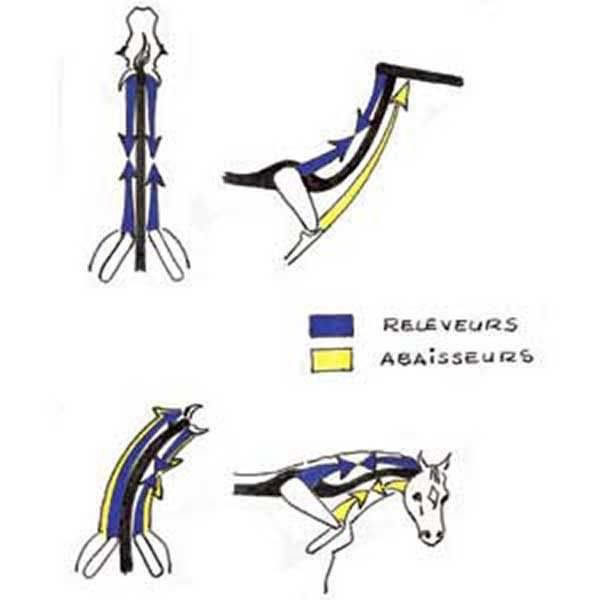
The horse that leans on the bit
Again acting on the corners of the lips, use demi-arrets(half-halts acting only upwards with the hands) to raise the base of the neck to rebalance the horse, counteract the pressure on the reins and cause a yielding of the jaw.
Then, using lateral flexions, seek an extension of the neck carefully maintaining a simple contact with a soft mouth. Go back to raising the neck whenever necessary. It is impossible to try to educate the mouth if the horse is not in balance.
The horse that refuses the contact by inverting his neck
If he raises his mouth above the hand, bring the hands higher than the mouth to establish a frank contact on the corners of the lips (which does not cause pain).
Going beyond the yielding of the jaw, if the rider increases the tension of the reins gradually upwards, it will cause the horse to gradually take them forwards and down. The rider releases proportionally, while maintaining the contact (as he would over a jump).
By the controlled extension of the neck, the horse learns to stretch into his reins and round his topline in another way. Once confirmed in this first step, the horse will be worked as in case no 1.
Nota Bene
In all cases, whenever the horse yields this is followed by a “descente de main” (lowering of the hand). The contact then becomes light with a tongue that is mobile and a mouth that is alive.
How can we lower the hand without previously raising the hand? Let us note that etymologically, “to dominate” means: to place oneself above. Any linguist can therefore confirm to a rider that dominating the horse with low hands is an offense to the tongue in both linguistic and anatomic terms (for once the spirit and the letter go hand in hand, how reassuring!)
As the “mise-en-main” progresses, the rider's actions become smaller until they become invisible. It is thus the stability of the head which allows the fixity of the hand, not the hand which forces the stability of the head.
In practice
By referring to these principles for initially working on the “mise-en-main”, the rider is being consistent with the brilliant definition by General L'hotte: “Le ramener ne se concentre pas dans la position de la tête, il r éside tout d′abord dans la soumission de la mâchoire, qui est le premier ressort recevant l′action de la main. Si ce ressort cède avec moelleux, à l′action qui sollicite son jeu, il entraînera la flexibilité de l′encolure et provoquera le liant des autres ressort”. (“Ramener is not limited to the position of the head, it resides first of all in the submission of, the first “spring” that receives the action of the hand: the jaw. If this “spring” yields softly when asked, it will lead to a flexible neck and cause the other “springs” to also soften.”)
This reasonable application of Baucher's contributions is both effective and gentle because it respects the nature of the horse, and educates it instead of constraining it. I have seen this with 200 to 300 horses of all kinds every year in lessons, for many years with quiet and rapid results. It is very successful with pupils in cases where many defenders of the official system (including professionals) had given up.
Admittedly, there are a number of riders who use these processes clumsily or inappropriately, seeing them only as simple tricks. But don't throw the baby out with the bathwater. THey at least have the merit and the elegance to try to find ways of not using means of constraint (side reins etc.). And no method has the monopoly on inappropriate use, I think you would agree?
What does official dressage impose on us? Sacrosanct “low hands”.
The “low hands” option
By virtue of a simplistic concept of the “mise-en-main”, limited to the unconditional “ramener” (end and means), the rider sets his hands low (some even hunch themselves up on the horse to put their hands at the knee level). This gives a crude action on the tongue (a hypersensitive organ). The horse tries to escape this pain by going above the hand. The rider resists (when he doesn't pull) and pushes to overcome the perverse effects of this hand brake. A vicious cycle ensues. We all know what follows… palliatives of all kinds. This approach condemns itself simply by the fact that it requires the systematic use of instruments of coercion (side reins on the lunge, draw reins, specially designed crank nosebands, tight curb chains, etc.)
WHat is a child psychiatrist worth who, without blaming the parents, prescribes the control of a turbulent child by muzzling him and tying him to his chair? He is a dangerous charlatan… Especially if he is supported by the Faculty!
A shame, because dressage is ennobled each time it leads to more knowledge of the horse and less instruments of coercion, more equestrian intelligence and less force.
The systematic recourse to low hands in the training of the horse is not supported by any intelligible explanation. This fashionable dogma has only one rationale, the sum of its ambitions: to reproduce and prolong the effect of the fixed reins to close the poll, while neglecting all the rest.
In the end, virtually all these horses end up overbent (unanimously considered by the great masters as a major fault). For want of anything better, official dressage has transformed this into a system. All in all, the panacea of “low hands” proves itself a deadly poison for equestrian art.
But all is well, because as Paul Valéry said: “The man considered qualified is he who is mistaken according to the rules”.
La Guérinière to the rescue!
In search of historical legitimacy and artistic endorsement, “dressage people” readily assert that this classical monument is part of their heritage. Unfortunately when they study him, they use a pair of scissors rather than spectacles and only keep what seems to be useful to their point of view. At best this shows a lack of thought and at worst it is intellectual dishonesty.
“Fixed and low hands”… he supposedly says?
Let us read the Master:
The bridoon presses only on the lips and very little on the bars… it is good to use it for horses who lean on the hands, who carry their neck low to resist, to raise them.
The first effect, which is to release the hand to move forward is a movement which is done by lowering it at the same time as turning it a little, nails down. The second action which is to support the hand, is done by bringing the hand closer to the stomach at the same time as raising it, nails slightly up. This last aid is to stop a horse or to perform a half-halt, or to move it back…
The third effect of the hand, is to turn right by bringing the hand to that side… The fourth effect is to turn left by bringing the hand there…
It is easy to notice that a horse obedient to the hand is one who follows it in all its movements…
And the good Master drives home the nail: “Any rider who does not know the use of the reins, works without rule and principle”. From this point of view, western riding is much closer to La Guérinière than official dressage.
They are also similarities between La Guérinière and Baucher's second manner which, due to sectarianism, are kept in the dark!
And there are many others:
- the search for the “descente de main” (yielding by lowering the hand) and “descente de jambes” (yielding by draping the legs)
- the rejection of any gadgets: Baucher wants nothing to do with these “machinations”, La Guérinière denies that these “straps” have “any utility”.
It is relevant that General Durand stated that by grafting a rational approach to Baucherism on the school of La Guérinière, one arrives at the very best that French horsemanship has to offer.
Unfortunately, through intellectual idleness and blind conformity, our teaching disavows the best of its roots and aligns itself with the worst, just to be “fashionable”.
“Mise en main” and collection
Linking the concept of “mise-en-main” and the state of balance of the horse: now there is an excellent idea!
But let us seriously examine the question. Not by using the esoteric and mundane statements which are the specialty of the dressage world, but by again getting our feet back on the ground (which would certainly not harm our balance!)
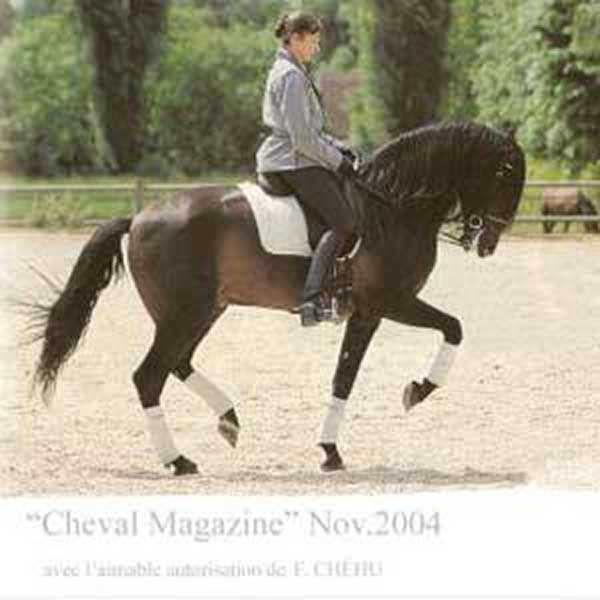
The following analysis results from simple calculations based on well-known experimental data (General Morris – Captaine de Saint Phalle):
- Free standing and in natural carriage, the extra loading of the forehand is on average 1/9 of the weight.
- 2/3 of the weight of the seated rider is borne by the forelimbs.
- From this natural attitude, if the neck is lowered or raised, it transfers 1/20th to 1/25th of the horse's weight towards the shoulders or towards the haunches.
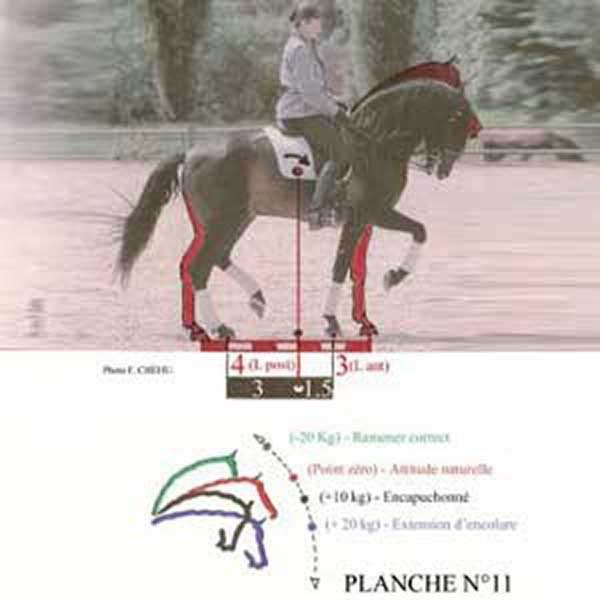
(point zero) natural attitude
(+10 kg) overbent
(+20 kg) extension of the neck
For a horse of 450kg and a rider of 75kg, the figures are as follows:
… continue reading “Taking Over Equestrian Culture“
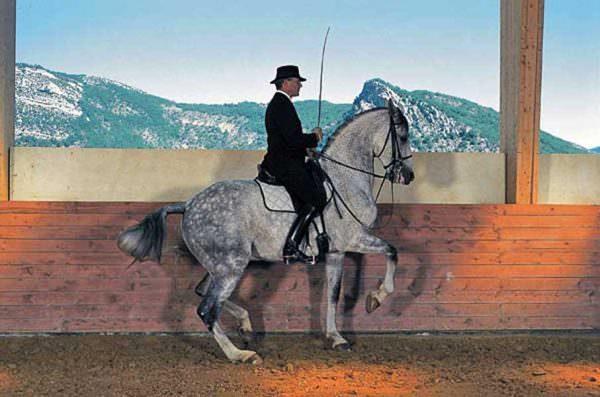
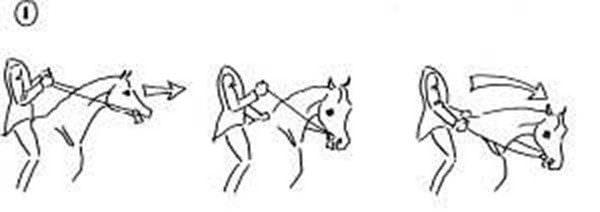
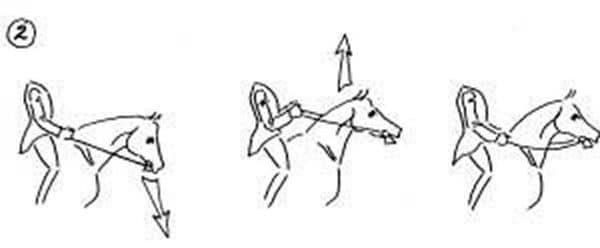
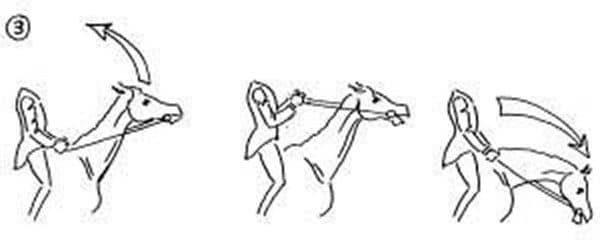
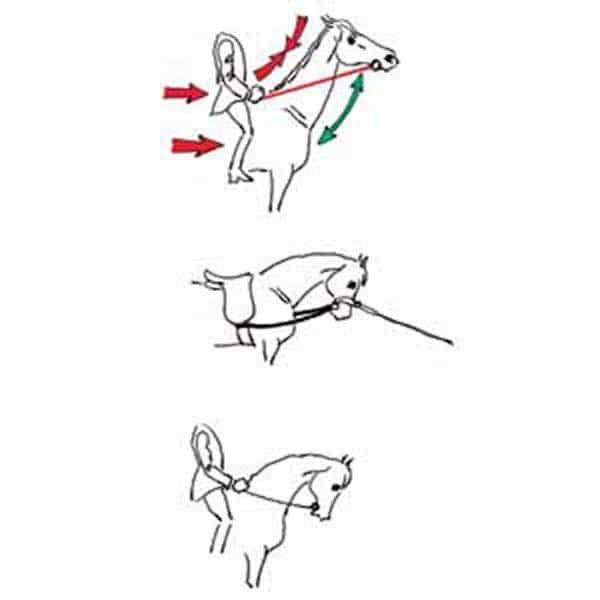
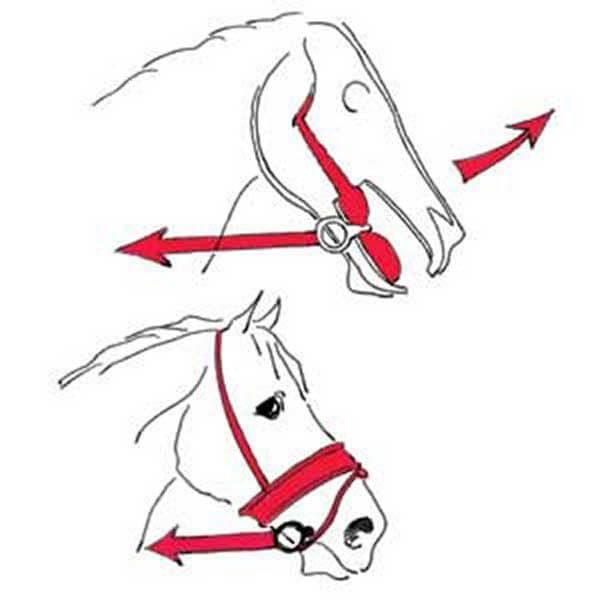
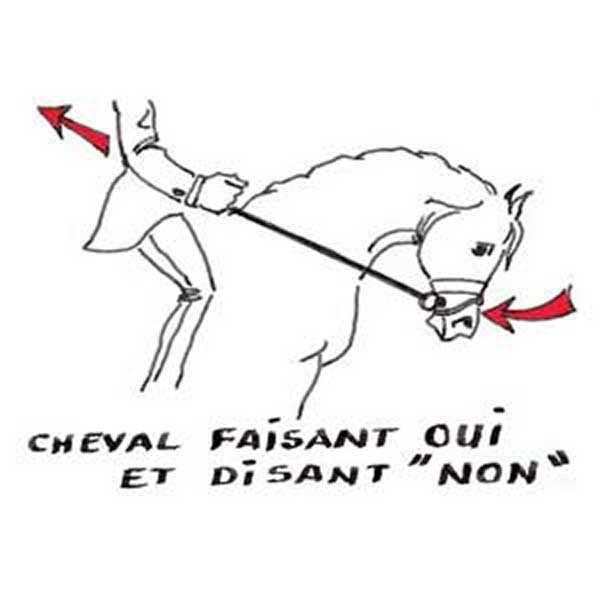
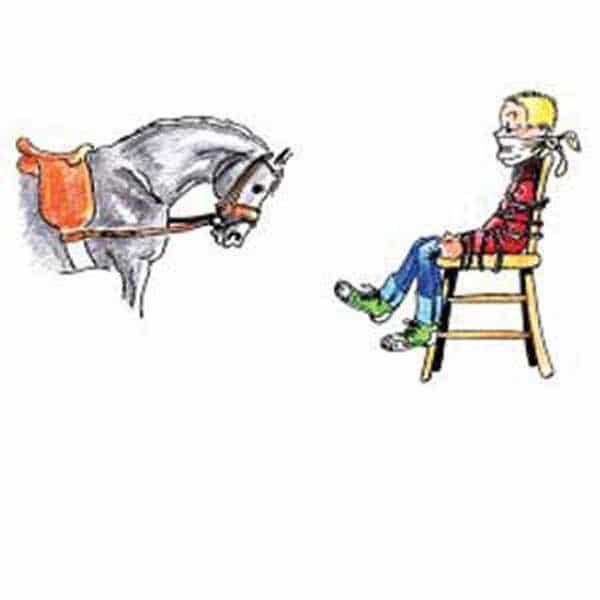
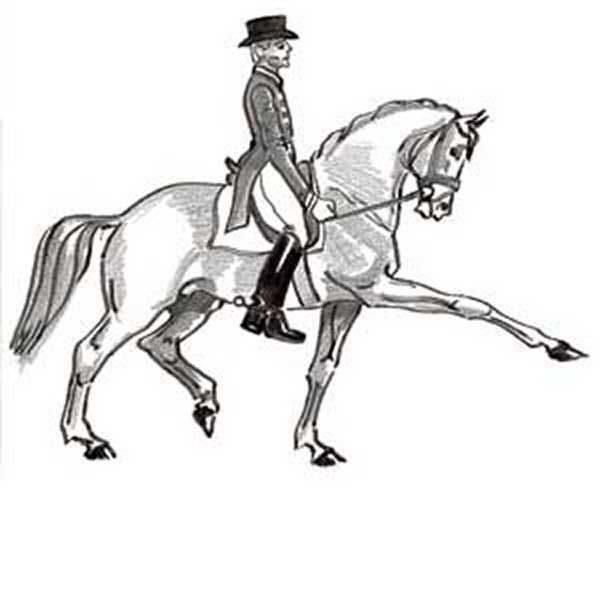
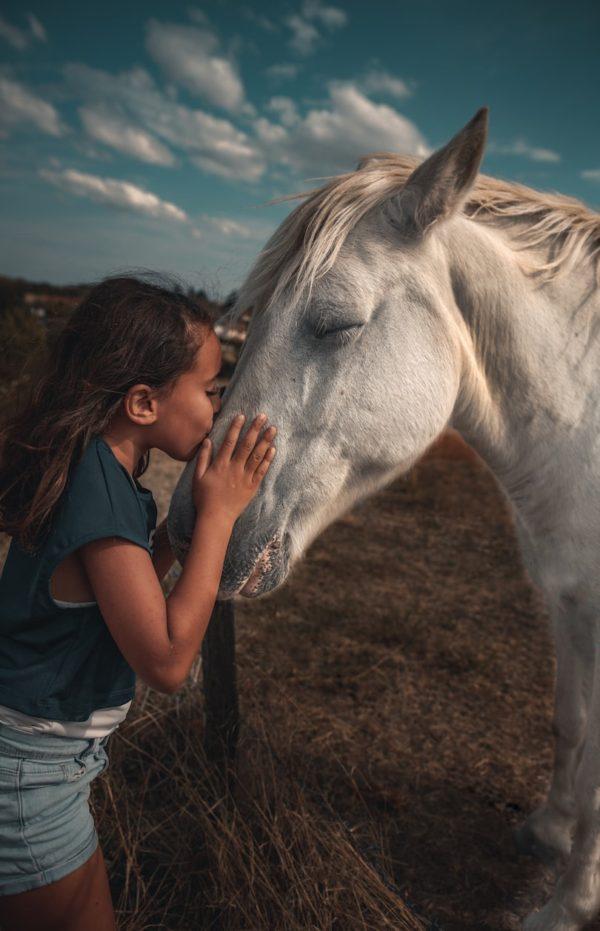
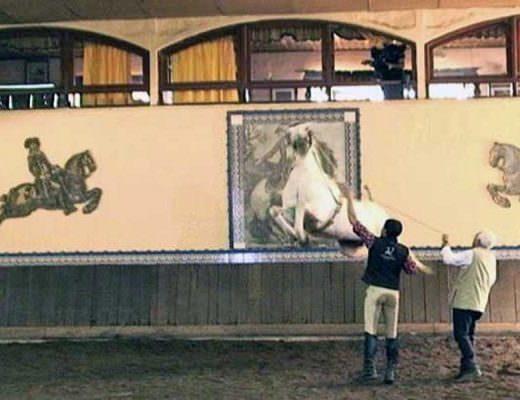
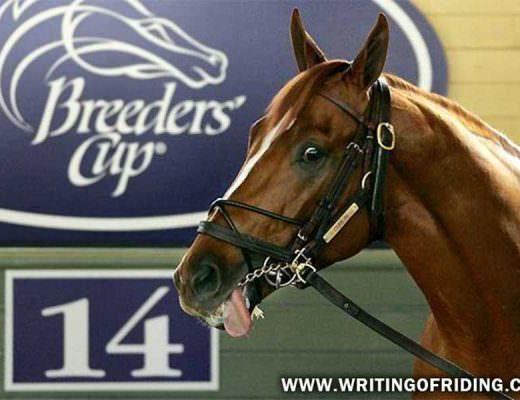
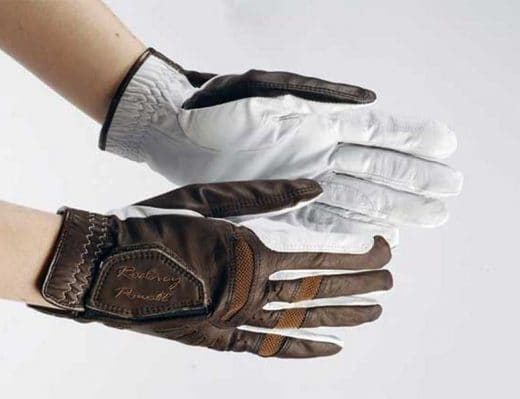
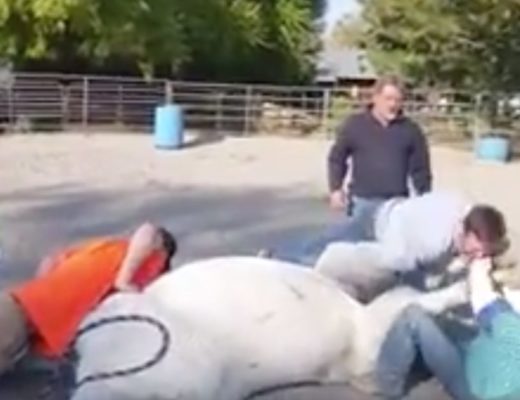
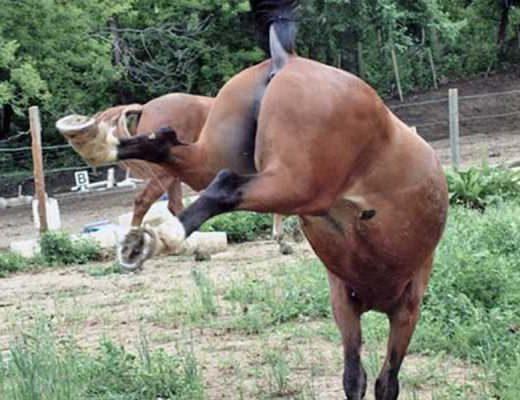
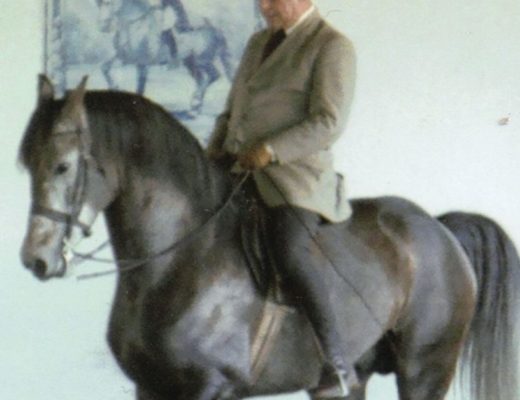
Interesting article and much of it available in the book Art of Riding by PK. However, when I attend clinics in UK as an observer I don’t see Ramener in the Avbvanaced 4th Year Students, and very little Impulsion from their horses, therefore no “Throughness” in the horses when in motion.This link shows a disturbing “Ideal” of High Noon after 5 years of training under Phillip Karl. https://www.youtube.com/watch?v=R7QWSZtW7G4 No wonder many people are not thinking his methods work. Personally I practice a lot of what he teaches with VERY good results. HOWEVER, I pay FAR more attention to Impulsion and “Throughness” from the rear end of the horse than The School of Legerete do. What one sees in practice on the internet and at his UK clinics is NOT what one reads about in PK’s books. I believe PK needs to be more vigilant about the ability of his Student Teachers he is recruiting onto his School of Legerete to become teachers. Most of them are already teaching his “System”, and I have had coaching from 2 of them. Neither are able to ride in all three gaits with an Appropriate Ramener, and this I discovered AFTER I had had my lessons with the 2 instructors. One could not even canter his horse and required PK to get on the horse to demonstrate ! The instructor (then in his 3rd Year with PK) was then advised to ride in running reins to help him!!!!! And this was all in an open clinic under PK instruction.